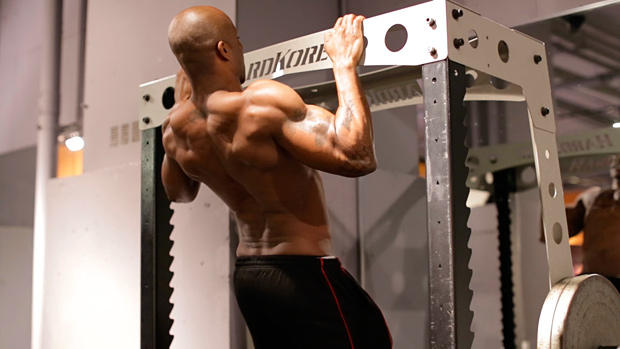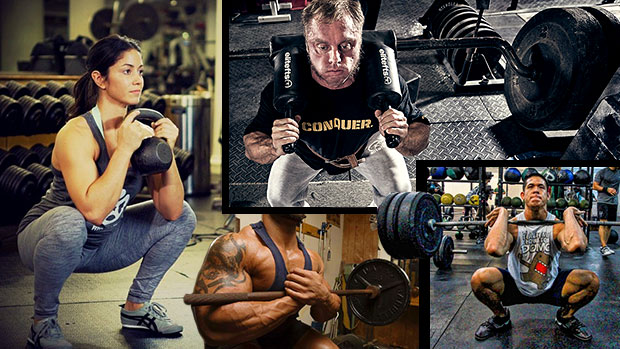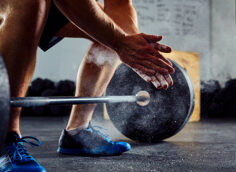Previous installments of the Contreras Files were largely an assortment of information gleaned from the latest literature.
While I plan to return to addressing the new research soon, this installment of the Contreras Files is another compilation of practical tips that I've learned as a lifter. (You can check out the first one here.)
If you can't find at least one actionable item in this article, then there's simply no pleasing you!
1. Go Heavier on Back Extensions (or Should I Say "Hip" Extensions?)
Whenever I go to commercial gyms, I'm always amazed at how complacent lifters are with their back extension strength. Two sets of 20 reps with bodyweight seems to be the standard.
This would be fine if the lifter was doing single-leg back extensions, but not with double-leg back extensions.
(Actually, the spine should stay stable while the hips flex and extend, so the lift should be called a hip extension, but I digress.)
If you're using just bodyweight, 35-100 reps is a better goal than just 20 reps!
My 123-pound female client Sammie can do a set of 10 reps with a 100-pound dumbbell. Here I am doing a set of six reps with a 100-pound dumbbell plus a monster mini-band – I'd estimate around 175 pounds of tension up top.
Bottom line is, you must set better standards for yourself!
2. Stone Lifts, Tire Flips, and Log Lifts for Ultimate Man-Power
In Stu McGill's 2009 study on strongman exercises, the researchers examined muscle activity in the abs, obliques, erectors, lats, glutes, hammies, and rectus femoris during the farmer's walk, log lift, suitcase carry, super yoke walk, Atlas stone lift, tire flip, and keg walk.
- For the rectus abdominis, tire flips and stone lifts finished first and second, respectively.
- For the external obliques, stone lifts and tire flips finished first and second, respectively.
- For the internal obliques, tire flips and stone lifts finished first and second, respectively.
- For the latissimus dorsi, tire flips and log lifts finished first and second, respectively.
- For the upper erector spinae, stone lifts and log lifts finished first and second, respectively.
- For the lower erector spinae, tire flips and stone lifts finished first and second, respectively.
- For the gluteus medius, stone lifts and tire flips finished first and second, respectively.
- For the gluteus maximus, stone lifts and tire flips finished first and second respectively.
- For the biceps femoris, tire flips and stone lifts finished first and second respectively.
- For the rectus femoris, stone lifts and tire flips finished first and second respectively.
Essentially, three lifts topped the number one and number two spots for each of the muscles tested.
It's interesting that the peak activity for the hamstrings wasn't nearly as high as it was for the glutes during the various strongman exercises (highest peak for hamstrings was 91% in the tire flip, compared to 259% in the glutes for the stone lift), indicating that strongman training is great for glutes but not so good for hammies.
3. Stop Doing that Lift You Hate; Thank Me in a Couple Months
Every lifter seems to have a few lifts that bother him. Perhaps it leads to persistent pain or injury, or maybe he simply dreads doing them. Or perhaps he never feels like he has the form down pat.
This probably has to do with individual genetics in terms of musculoskeletal design.
We all know that chins, presses, squats, and deadlifts are the best lifts in the business. But they aren't perfect for everyone. There are plenty of excellent exercise variations that activate the same muscles and strengthen the same movement patterns as the big basics, so feel free to find a suitable alternative if need-be.
Lifting is more fruitful and enjoyable if you love your program and your joints stay healthy.
4. Kettlebell Swings are Explosive Standing Hip Thrusts
You've got the squat and the jump squat, you've got the deadlift and the power clean, and you've also got the hip thrust and the kettlebell swing.
If you learn how to swing properly, it simply feels like an explosive barbell hip thrust. You get the same feeling in the glutes. They're also excellent for balance and grip strength if you go heavy. Can you tell I like heavy swings?
5. Pump Thrusts for a Glute Pump
If you're looking for a glute pump at the end of a workout, place a 50-100 pound dumbbell in your lap and bust out one or two high-rep sets of hip thrusts.
However, don't use a full ROM – just pump your hips like a piston and focus on the top half ROM.
Envision yourself "squeezing your glutes against the resistance." Go fast, but still control the load to end-range hip extension.
Two sets of 30-50 reps of these will have you walking like a duck! You probably won't have any friends who will talk to you in the gym, but your glutes will definitely be jacked.
6. The Safest Bilateral Deadlift Variation
I used to think that the hex-bar deadlift was the safest bilateral deadlift variation, but I've since changed my mind.
The heavy kettlebell deadlift is the safest. It's like a sumo hex-bar deadlift (or perhaps more appropriate, a sumo hex-bar "squat lift"), but it allows for heavier loads, especially with women.
Consider buying a monster kettlebell (or making your own homemade t-handle) if you're an injury-prone lifter who doesn't want to give up on the deadlift pattern. My 123-pound female client Sammie can bust out 15 reps with the 203-pound kettlebell with a double-overhand grip.
7. Barbell Curls are a Full-Body Exercise

When you get really strong at the barbell curl, you realize that it's a full body exercise. Tens reps with 135 pounds requires a ton of core stability, and along with taxing the biceps, it'll work a ton of spinal extensor and upper back musculature. This helps explain why they can get you breathing like crazy following an all-out set.
Don't underestimate the challenge produced on the entire body's musculature with this exercise. Weak people bash curling because they can't fathom the total body strength and stability requirements involved in getting strong. Check out this chart from an experiment I conducted on myself a while back.
| Mean Bicep Activity | Mean Mid Trap Activity | Mean Lower Trap Activity | Mean Lumbar Erector Activity | |
| 135-pound Barbell Curl | 95% | 67% | 45% | 71% |
I'm sure there are more muscles that get challenged significantly during a barbell curl, but what's important to note is that they hammer the biceps while stimulating a lot of other muscles in the process.
8. Static Hangs for Extra Grip Work
I like heavy barbell holds for specific deadlift grip strength, but this can beat you up significantly. Two very joint-friendly grip-strengthening exercises are the single-arm static hang and the double-arm Fat Gripz hang. Give them a try for extra grip work!
9. Bulgarian Split Squats from Higher Rear-Foot Elevations
Lately I've been doing dumbbell Bulgarian split squats with my rear foot draped over the pad of the leg extension machine. It's significantly higher than what I'm used to, and I prefer this method much more than using a bench.
Consider experimenting with a higher rear-leg elevation and a rounded pad (which "hooks" the leg since it contours to the crux of the lower shin/upper foot) – you might like it more than the traditional version off the bench.
10. Don't Be Afraid to Sit Down to do Shoulder Presses, But if You do, do it Right
If your low back consistently hurts when you perform standing military presses, try squeezing your glutes and abs to lock the core and prevent lumbar hyperextension.
Hopefully that does the trick, but if not, don't be afraid to sit down for shoulder pressing – I prefer this method to the standing variation. Just make sure you use a military bench with a low seat height. If you use a seat that's too tall, your scapulae will be pinned against the bench and will fail to upwardly rotate. This is a recipe for disaster.
11. Superset KB Swings with RKC Planks
Lately I've been supersetting my kettlebell swings with RKC planks. Holy glute burn is all I have to say. I do a set of 10-20 heavy, explosive swings followed by a set of 30-second RKC plank iso-holds where I hold a maximal glute contraction and posterior pelvic tilt the entire time. Sounds easy, but give it a try!
12. Self-Assisted One-Arm Push-Ups

I'm not that good at one-arm push-ups. Instead, I prefer to do "self-assisted" one-arm push-ups. I do these whenever I'm on vacation and need a good pec/triceps workout but don't have access to equipment. Three sets of ten kicks my butt!
13. Floor Pressing Without Racks
If you don't have a rack or a bench, you can still obtain an excellent horizontal pressing workout by simply doing floor presses. Here's a video showing how to get the bar into position from the floor:
14. The Clam Raise
Here's another good exercise to do if you're forced to train at home or in a hotel. I call it the clam raise, since it's like a side-lying clam, but instead of raising your leg in an open kinetic-chain, you raise your entire body in a closed kinetic-chain. Try 2 sets of 10 reps. This is surprisingly difficult and works the glutes very well!
15. Spinal, Pelvic, and Hip Biomechanics for Squats, Deadlifts, Hip Thrusts, and Back Extensions
I recorded this video six months ago and never embedded it into a blog post or article. I don't know why, but it's really important information. Please watch this video when you have 15 minutes to spare:
Conclusion
I hope you enjoyed my ramblings and perhaps picked up something useful you can use in your own training. See you next month!





